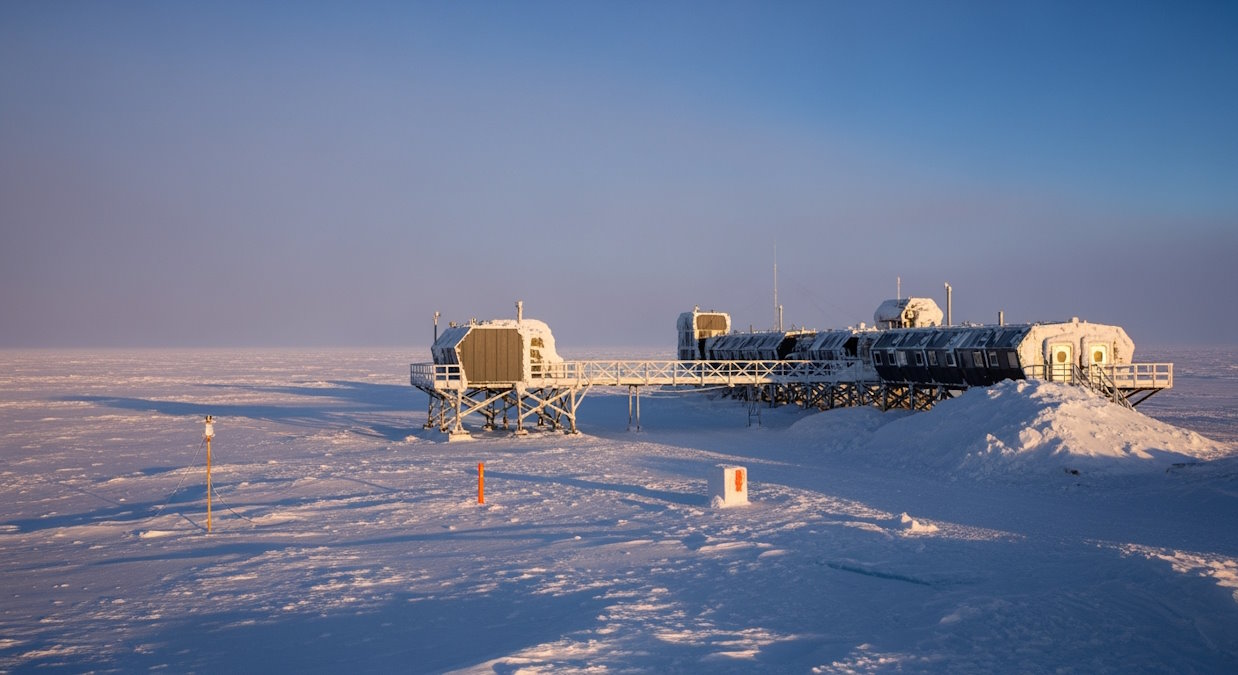
By Christopher Monckton of Brenchley | Jan. 3, 2023
The cold weather on both sides of the Atlantic last month seems to have had its effect on temperature, which fell sharply compared with November, lengthening the New Pause to 8 years 4 months, as measured by the satellites designed, built and operated by Dr Roy Spencer and Dr John Christy at the University of Alabama in Huntsville:
The graph shows the least-squares linear-regression trend on the monthly global mean lower-troposphere anomalies. The least-squares method was recommended by Professor Jones of the University of East Anglia as a reasonable method of showing the trend on stochastic temperature data.
Recall that the Pause graph does not constitute a prediction: it simply reports the longest period, working back from the present, during which the temperature trend is not positive.
As always, here is the full 45-year UAH dataset from December 1978 to December 2022, showing a far from dramatic global warming trend equivalent to just 0.134 C/decade:
One of the virtues of the long Pauses that have characterized the global-temperature anomaly record even in recent decades is that they provide a simple and instantly comprehensible demonstration that the global-warming rate is proving to be less than half the original midrange prediction in IPCC (1990), which presented four emissions scenarios, of which the business-as-usual scenario A has proven closest to reality. For instance, Scenario B was based on the assumption that emissions would remain constant at the 1990 annual level until 2025. That didn’t happen. Emissions have risen by enough to increase the anthropogenic forcing by more than 1 W m–2 since 1990.
Though emissions have thus proven close to scenario A, that scenario’s 0.3 K/decade midrange medium-term prediction was more than twice outturn: observed warming since 1990 has been only 0.13 K/decade. Since scenario A predicted 3 K ECS, the corrected ECS based on outturn since 1990 is thus just 1.3 K: a beautifully simple argument.
A similar result is obtainable by another simple method: energy-budget analysis. In a recent column I demonstrated that analysis, prompting some commenters to ask for an explanation of the energy-budget equation. So here goes.
The energy-budget equation says that equilibrium doubled-CO2-equivalent sensitivity (ECS), the standard metric, is the product of the anthropogenic fraction M of observed industrial-era warming ΔTobs and the ratio of the doubled-CO2 forcing ΔQ1 to the difference between observed industrial-era forcing ΔQobs and the satellite-observed radiative imbalance ΔNobs.
At a thermal equilibrium (such as the period from 1850-1930 when the trend in global mean surface temperature was zero) the solar radiative energy absorbed in the Earth’s atmosphere and the thermal infrared radiation emitted from Earth to space are about equal.
The positive energy imbalance ΔNobs that has since been measured, however, indicates that the Earth-atmosphere system is gaining energy, which is why it is warming.
The denominator ΔQobs – ΔNobs in the equation is the component in period forcing ΔQobs realized to date in period observed warming ΔTobs. The ratio of doubled-CO2 forcing to that realized component in period forcing converts the anthropogenic fraction of ΔTobs to ECS.
In the equation, if one increases the estimate of any of the four terms shown in red one increases ECS. If, however, one increases the estimate of observed period forcing ΔQobs, shown in green, one reduces ECS.
In short, the energy-budget equation is an excellent way to see what is going on under the hood. One can watch as the usual suspects wrench and torture the data so as to shore up the high-ECS narrative on which the tottering, shoddy edifice of international wreck-the-hated-West policy is unsoundly founded.
Take the anthropogenic fraction Mof industrial-era warming.One may deduce from Table 2 of Wu et al. (2019), giving anthropogenic and natural components in warming over eight periods covering 114 years to 2013 that about 74% of warming to date was anthropogenic. Yet climatology tends to push Mup to 100%, and extremists will try to maintain that Mis about 110%- i.e., the Earth would be cooling were it not for our influence on the climate.
Observed industrial-era temperature ΔTobs is also being pushed upward. HadCRUT4 said warming to early 2022 was 0.93 K – call that 0.95 K to date. But HadCRUT5 pushes that up to about 1.05 K, and IPCC (2021) jumps it up startlingly to 1.27 K.
It is the same sad story with the doubled-CO2 forcing ΔQ1. As far back as the 1980s, we were told that the uncertainty in ΔQ1 was ±10%. However, though the CMIP5 models (Andrews 2012) gave ΔQ1 as a mean 3.45 W m–2, and CMIP6 gave 3.52 W m–2 (Zelinka et al. 2020), IPCC (2021) hikes it by 14% to 3.93 W m–2.
Likewise, the official narrative has for decades tried to minimize the value of observed industrial-era forcing ΔQobs so as to maximize ECS. As Professor Lindzen has long pointed out, a number of dodges are used, not the least of which is the notion that our particulate emissions had caused a large negative aerosol forcing, which the Professor bluntly describes as a “fudge-factor”. The actual aerosol forcing is likely to be vanishingly different from zero. NOAA shows 3.2 W m–2 forcing from anthropogenic greenhouse-gas emission alone, before allowing for ozone forcing of another 0.4 W m–2. However, IPCC (2021), afer deploying the aerosol fudge-factor, gives just 2.8 W m–2 all in.
Hitherto, though, the net radiative imbalace ΔNobs had been left alone. It was generally given as around 0.79 W m–2. However, the increasingly desperate revisionists have been at that one, too, suggesting last year that ΔNobs is more like 1.1 W m–2.
Sure enough, if one plugs all these altered but allegedly “midrange” estimates into the energy-budget equation ECS comes out at 3.2 K, in line with the long-running official narrative. Now you know how the trick is done: change all five variables so as to maximize midrange ECS and thereby purport to justify the otherwise obviously excessive official figure.
Taking the more reasonable and more mainstream values shown in my earlier piece on the energy-budget method gives 1.3 K midrange ECS, in line with the observationally-derived 1.3 K described earlier herein.
Another virtue of the energy-budget method is that it requires absolutely no knowledge of the amplitudes of temperature feedbacks. Which is just as well, because IPCC’s current estimate that ECS is between 2 K and 5 K implies a total absolute feedback strength of between 0.22 and 0.27 W m–2 K–1. The breadth of that interval, just 0.05 W m–2 K–1, is so narrow that any attempt to derive ECS by feedback analysis, whether directly or via diagnosis of feedback strengths from models’ outputs, is, statistically speaking, no better than guesswork. The uncertainties in feedback strength are far too great to give any credence to any prediction from any general-circulation model, since the feedbacks diagnosed from those models exceed the absolute feedback strength by an order of magnitude.
How long will the current Pause last? The UN, getting desperate now that this second Pause is beginning to look rather serious, is saying – probably rightly – that the next el Niño will bring the Pause to an end, just as the last big one ended the previous 19-year Pause. But the fact of these frequent and prolonged Pauses provides a striking visual demonstration of the fact that the world is simply not warming at anything like the originally-predicted 0.3 K/decade.
The profiteers of doom, of course, are presenting the Pause in a quite different light. They say that the eight years of the current Pause showed the warmest temperatures on record. Except that it was a whole lot warmer in the medieval, Roman, Minoan and Egyptian Old Kingdom warm periods, which somehow never get mentioned as part of the record.
Some commenters here have speculated that the Sun can be expected to go through 60 quiet years, leading gradually to global cooling. However, it is not yet clear that reliable long-term forecasts of solar activity can be made. A striking example of the difficulties is the current sunspot record:
The predicted sunspot number is the red curve. Actual data is the black spline curve, with the six-month running mean in blue. The departure from the prediction – on the high side – is worth keeping an eye on. It may be that the Sun’s quiet period is already over. Who can say?
What we can say is this. Even if the whole of the West actually attained net zero emissions by 2050, the world would be just one-seventeenth of a degree cooler than if the current and continuing uptrend in global emissions were to continue. And each $1 billion we spend on destroying the Western economies would prevent between one four-millionth and one thirty-millionth of a degree of future warming. And we can’t even achieve that much, because the necessary techno-metals to attain net zero are just not available.







